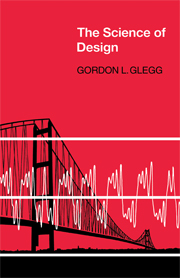Book contents
- Frontmatter
- Contents
- Preface
- 1 The Overall Picture — Plan View
- 2 The Overall Picture — Elevation
- 3 Special Cases
- 4 A Rogue of Variables
- 5 Journeys into Lilliput
- 6 Transformations and Translations
- 7 The Dictatorship of Time
- 8 Looking, Seeing and Believing
- 9 The Consortium
- 10 The Art of Conversation
- 11 Conclusions and Recommendations
- References and Notes
- Index
6 - Transformations and Translations
Published online by Cambridge University Press: 04 August 2010
- Frontmatter
- Contents
- Preface
- 1 The Overall Picture — Plan View
- 2 The Overall Picture — Elevation
- 3 Special Cases
- 4 A Rogue of Variables
- 5 Journeys into Lilliput
- 6 Transformations and Translations
- 7 The Dictatorship of Time
- 8 Looking, Seeing and Believing
- 9 The Consortium
- 10 The Art of Conversation
- 11 Conclusions and Recommendations
- References and Notes
- Index
Summary
You are still watching this football match on the television and, naturally, it is a scaled down view that you see. But you don't. If you really had a scaled down version of the match in your sitting room, you would see a number of over-heated little dwarfs running about on the carpet in imminent danger of being eaten up by your dog.
You are not seeing a transposition of the game into your room, but the t.v. has provided you with the game faithfully transferred into another medium, where it re-appears as a small point of light dashing around on a special sheet of glass.
The actions of the players are in fact transformed twice. First into radio waves, then into an optical display; and because we are dealing in absolutes their reality is perfectly preserved. We must next consider how this principle may help in expanding the usefulness of model making.
In the last chapter we assumed that our model goals were constructed of the same material as the full size ones, but this is not mandatory. We can, and often do, transform our model by using another medium of construction; some special material that may help us to save time or money.
For instance, our totally transposed goal models are very stiff and their deflection measurements will require highly precise instruments. Moreover the imposed displacements for influence lines technique are likely to involve considerable forces which again are often inconvenient.
- Type
- Chapter
- Information
- The Science of Design , pp. 49 - 55Publisher: Cambridge University PressPrint publication year: 1973



